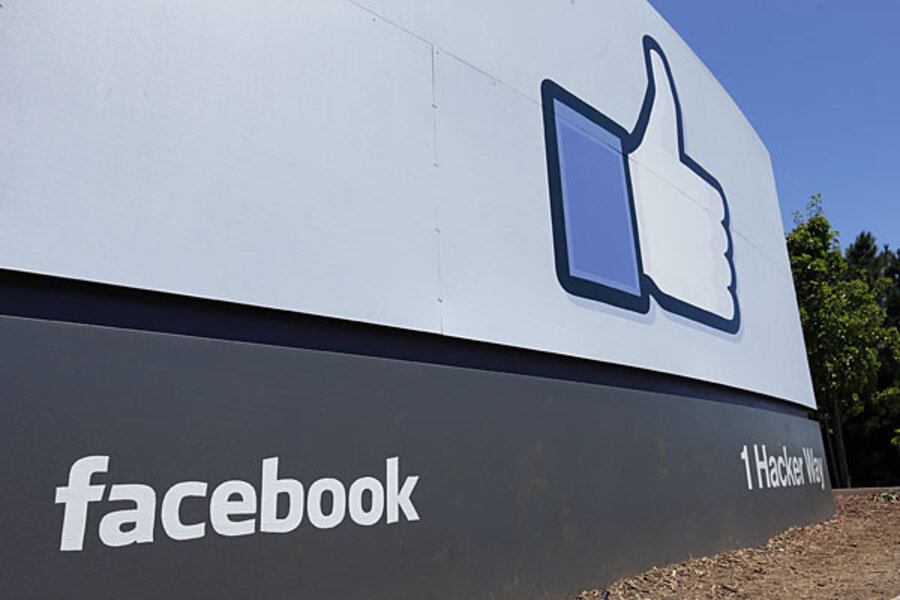Click this headline to find out why Facebook is going after 'click-bait'
Loading...
Facebook is changing what you see in your news feed – again. Only this time it says you'll like the change.
The social network giant announced in a blog post Monday that it is changing its News Feed algorithm to reduce the amount of "click-bait" seen by users.
"Today we’re announcing some improvements to News Feed to help people find the posts and links from publishers that are most interesting and relevant, and to continue to weed out stories that people frequently tell us are spammy and that they don’t want to see," writes Khalid El-Arini, a Facebook research scientist, and Joyce Tang, a Facebook product specialist, in a blog post.
The last time Facebook made headlines for altering its news feed it triggered a heated controversy over a psychological study that deliberately manipulated users' news feeds to see how increased positive and negative content affected users' emotional states. That study was conducted without users' explicit consent or knowledge, sparking outrage and even a small movement to boycott Facebook.
But this time, the social network says it is trying to heed what users say they want: more serious content.
Click-bait refers to posts that use words and images designed to get people to click on a link without giving people much information as to what exactly the post contains and how much information they're going to receive once they click.
"You'll NEVER believe which two stars got into a fight on the red carpet last night!! CLICK to find out which starlet they were fighting over!!" reads an example of a click-bait headline cited in the blog post.
"It’s a lure twinkling in the Internet waters meant to resemble the informational nourishment we want," writes Luke O’Neil in Mediaite. "Once we’ve bitten down, it’s too late, the trap has been set. Then we’re tossed back into water, unfed, and disoriented."
Many Web publishers, including numerous news organizations, rely on these types of clickable headlines to drive Web traffic to their sites. This in turn helps to generate revenue through the sale of online ads, which are aided by accruing lots of clicks on a website.
But in a survey of content that Facebook users prefer to see, 80 percent said they preferred headlines that fully explain what the post in question is about without any deliberately vague language.
Until now, Facebook has granted weight to posts that generate lots of clicks, a key reason why click-bait can often appear high in a user's news feed. Now, Facebook says it will use different metrics to measure the quality of posts. These include how much time users spend on an individual post and whether or not they engage with the post through actions such as sharing and commenting.
"If people click on an article and spend time reading it, it suggests they clicked through to something valuable," the Facebook blog post reads. "If they click through to a link and then come straight back to Facebook, it suggests that they didn’t find something that they wanted."
And yet, as Mr. O'Neil points out in Mediaite, virtually every major website that relies on web traffic, including The Christian Science Monitor, uses eye-catching headlines that deliberately withhold some type of information, to one degree or another.
Still, a schism often arises between the kinds of content users say they want and what people actually end up reading on the Internet, as Derek Thompson writes in The Atlantic.
"Ask readers what they want, and they'll tell you vegetables. Watch them quietly, and they'll mostly eat candy," he writes.
According to a 2013 list compiled by Buzzfeed of Web traffic to sites within its partner network, which includes publications such as The Atlantic and The New York Times, the majority of stories that went viral were not "hard news." Rather, they were lists, quizzes, and photos – feel-good content.
But as social networks are now "the new front page and homepage for news," it would appear that the behemoth of the crop has taken it upon itself to weed out the more frivolous content. Earlier this year, Facebook also went after "Like-baiting," the process of urging readers to "like" a post, another ploy to perform better for Facebook's algorithm.
Facebook adds that in the next few months publishers who rely on click-baiting articles to drive Web traffic, but who don't sustain high audience engagement on their site once people click their link, will likely see fewer clicks coming from Facebook.
"We’re making these changes to ensure that click-bait content does not drown out the things that people really want to see on Facebook," the blog post reads.








